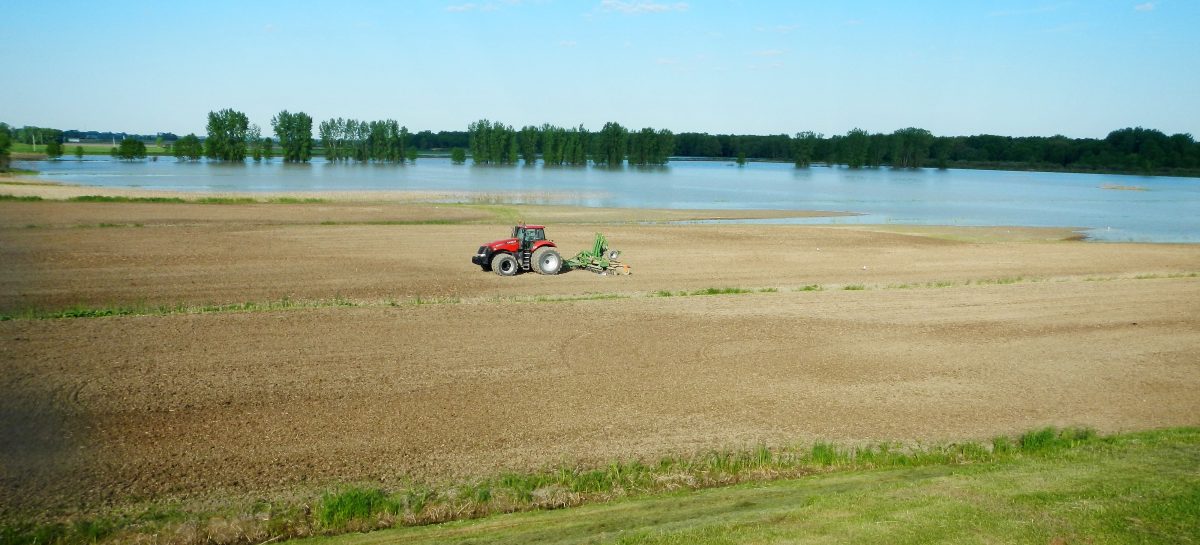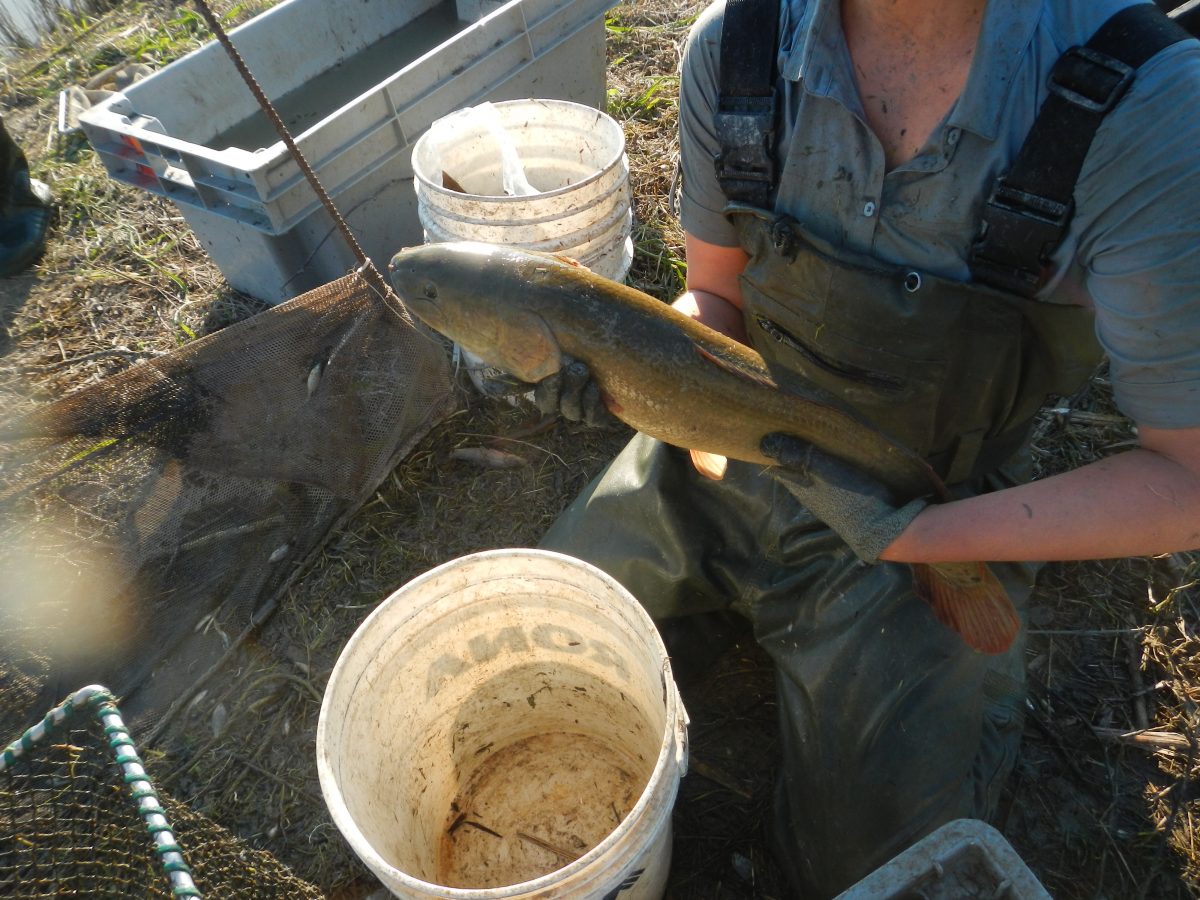Floodgates open for fish along St. Lawrence River
This spring, migrating ducks made way for incoming fish on DUC wetland sites along the St. Lawrence River. But the fish didn’t want to be there. DUC and its partners got them back in the swim of things.

Intensive flooding in southern Quebec affected many communities along the St. Lawrence and Ottawa Rivers this spring. In addition to the heavy human toll, flooding affected the area’s wildlife in unexpected ways.
Record flood levels along the St. Lawrence resulted in water that poured over dykes and into many DUC wetland projects adjacent to the river. The water washed thousands of fish into several shallow basins used by migratory waterfowl that stage in the marsh every spring before heading further north to breed.

©DUC
Instead of greater snow geese, pintail, mallard, black duck and northern shoveler, the affected wetlands were now alive with yellow perch, pumpkinseed, brown bullhead, northern pike, common carp, tench (an invasive species) and other fish.
Located on the south shore of Lac Saint-Pierre, DUC built the Baie-du-Febvre/South-Nicolet project in the early 1990s. It’s a large complex (1,335 acres), including three spring staging areas (539 ac). The staging marshes are shallowly flooded in spring to provide food and resting areas to waterfowl during migration. Once the waterfowl have left in Mid-May, the water is pumping out into the St. Lawrence River to give way or access to agricultural activities. DUC has an agreement with the Société d’Aménagement Récréatif pour la Conservation de l’Environnement du Lac Saint-Pierre (SARCEL), manage the site.
This year, due to the flood and influx of fish (only in two segments out of three), the Quebec Ministry of Forests, wildlife and Parks (MFWP) asked SARCEL to postpone the pumping of the water because of the large number of fish in the wetlands. This lead to a joint fish rescue operation.
Rescue efforts started June 7 and 8 in one of the two flooded segments. Three DUC employees, together with staff from MFWP, SARCEL and the Environment office and land of Odanak and Wôlinak Reserves waded in and got to work.
It was a physically demanding job, says DUC conservation specialist Patrick Harbour.
“First, we installed a net in front of the pumping station to prevent the fish from entering the pump,” says Harbour. “Then, we pumped water out to concentrate the water and the fish in an area along the dyke. We used a seine net over a distance of about 1000 meters to collect as many fish as possible. We put the fish into large tanks and then released them into the river on the other side of the dyke.”
Harbour estimates they used the seine net 20 times over the course of the two days. They measured, counted and identified the largest fish species. The team captured about 400-450 carp, each about a meter long and weighing about 20 pounds. Commercial fishermen give a helping hand and picked up about 150 of the biggest carp.
According to Harbour, the rescue went…swimmingly. The morning of June 22, the rescue operation resumed at the second staging marsh. In this case, the floods had breached the dyke, so the rescuers had to wait until river levels dropped below the level of the water inside the segment.

©DUC
Fish also washed into two segments of DUC’s Saint-Barthelemy projects on the north shore of Lake Saint-Pierre. Here, DUC is lowering water levels by gravity and let the fish swim out of the water control structure. As soon as water levels will be low enough, within the next days, they’ll be rescuing fish there, too.
The net result from the efforts of DUC and its partners will be better known when a report is issued later this summer. Based on current knowledge and problems observed in the region, DUC is currently working to revise the biological concept of these staging wetlands and in order to put in place the best practices of these lands located on Lac Saint-Pierre floodplain. In the meantime, DUC staff will hang up their fish rescue capes and get back to rescuing wetlands for the ducks.



